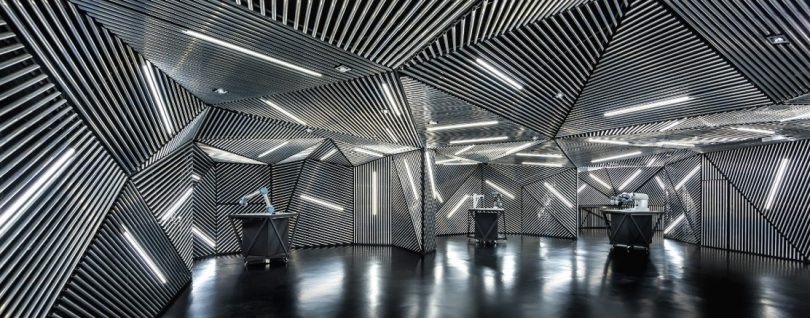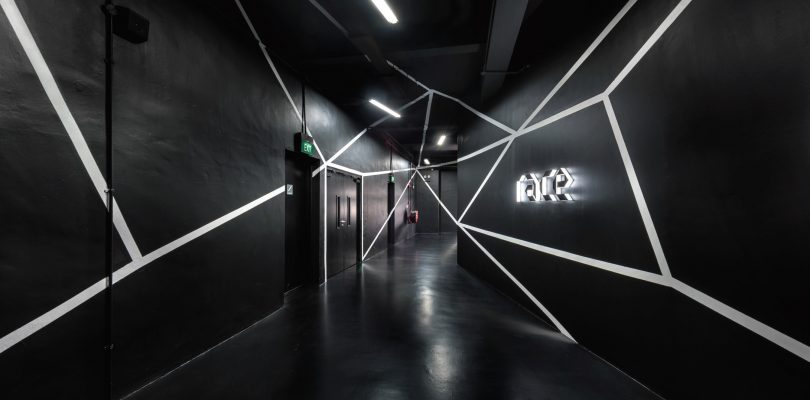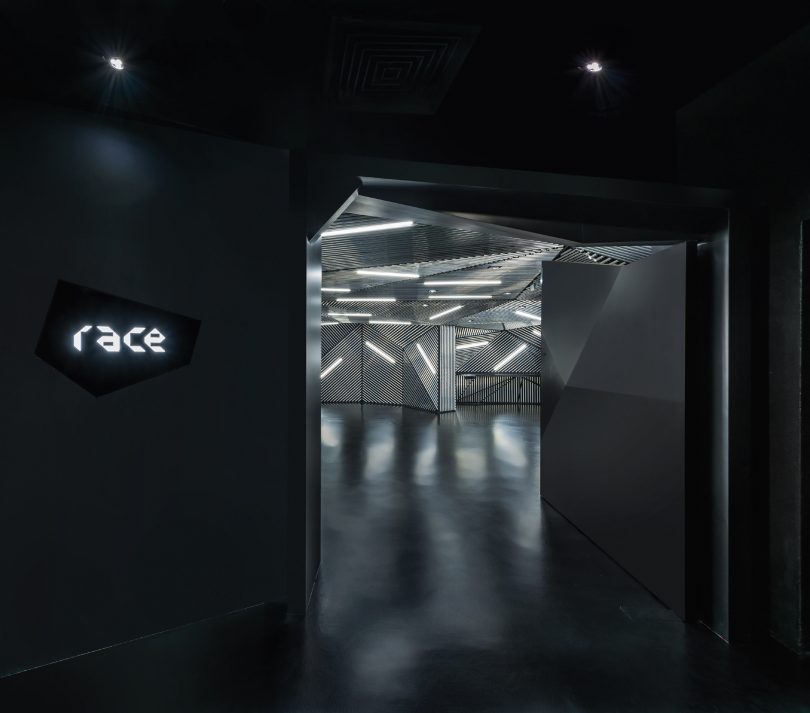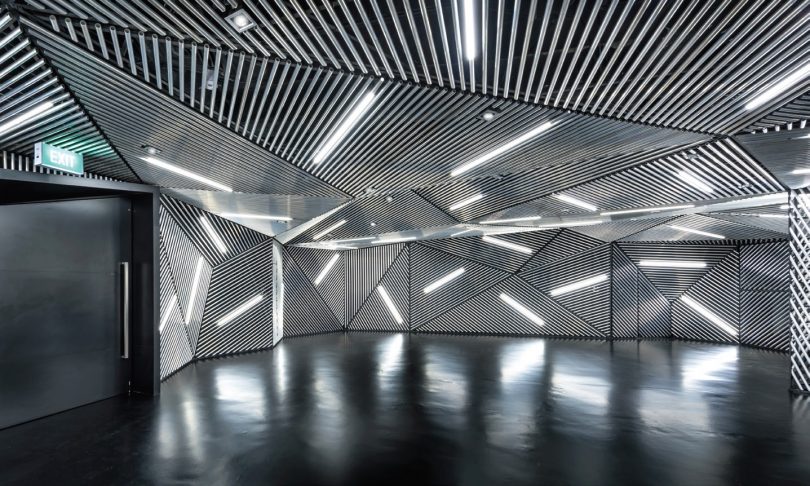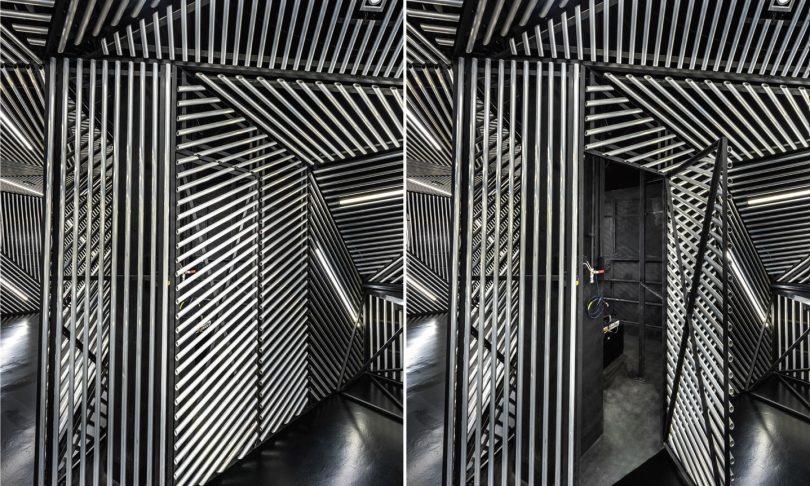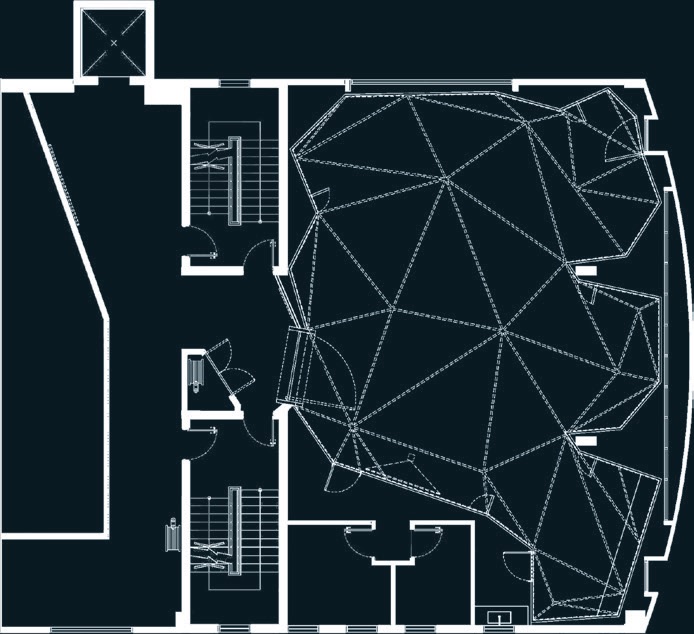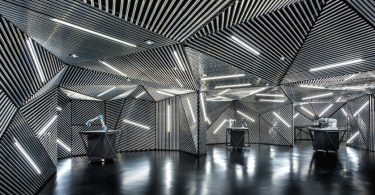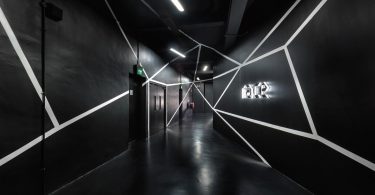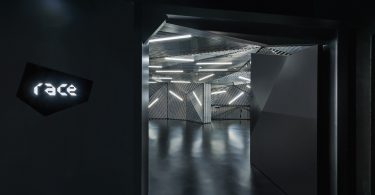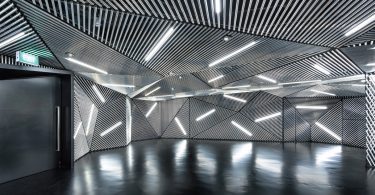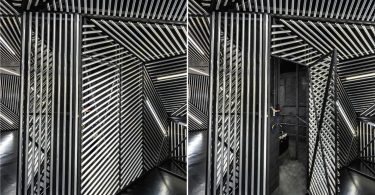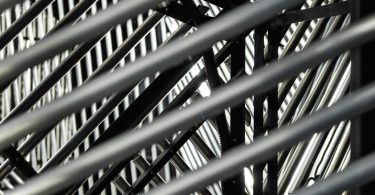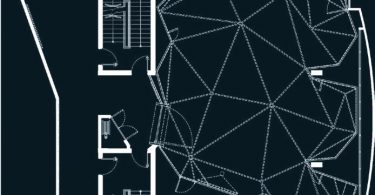Winner of Workplace Category | Singapore | BCI Asia Interior Design Awards 2018
Ministry of Design (MOD) was commissioned to design the branding and spatial experience for Robotics Application Centre for Excellence (RACE), a new robotic facility aimed at education and introduction of robots into automation in existing manufacturing industries. RACE also intended to feature a series of interchangeable modular robots as a key unique proposition.
BRANDING AND DESIGN INSPIRATION
Inspired by the concept of modularity and influenced by aesthetics of precision and dynamism, the logotype is an expression of a complete form comprising individual stand-alone parts.
Overall, the space is designed to provide a dynamic, future-forward backdrop to usher in an age of automation and robotics. The designers felt that it was important to excite and incentivise mid-career professionals to learn these new skills, and embrace new robotics technologies, by emphasising the future-forward characteristic of this industry.
SPATIAL EXPERIENCE
The brief for the laboratory space required flexibility to showcase a changing series of modular robots as well as be used for hands-on training and lectures. The laboratory needed to be a continuous open space for large lectures, yet conducive for hands-on training for small clusters. Underpinning this brief, MOD also sought to create an engaging and future-forward spatial experience that denotes the idea of industrial automation and precision.
Upon arrival at the lift lobby, a vivid prelude to the laboratory space greets the viewer. A web of soaring white lines cut through the black space to create an anamorphic experience to disorient the floor from the ceiling. From the black envelope of the lift lobby, a custom oversized door pivots open to reveal a dramatic metallic faceted space, creating a contrast that is at once striking yet complementary.
MATERIALS
As the robots are designed to be easily moved and relocated, the main considerations were mainly access to the supply of electricity, data and compressed air that are piped along the ceiling. As they are typically unattractive, they had to be concealed yet easily accessible. There is also a need to ensure enough circulation for moving the robots in and out of the space, hence the extra-large entrance door. An additional requirement was for the floor material to be anti-static, which is an inherent quality for most flooring surfaces.
For maximum flexibility to the space, MOD introduced a ‘second’ skin, developed to seamlessly create a dynamic space by deconstructing the ceiling and wall planes into an array of dazzling facets. Each facet comprises stacked layers of hand-cut aluminium hollow tubing, rotating the direction of the tubes with every facet to create a bold multidirectional effect. The aluminium screen cladding also serves to cloak the necessary but unsightly mechanical and electrical services while allowing ease of access for operation. This skin was shaped in plan with enclaves for small group work clusters accompanied by separate access hatches to the services behind. This is needful to house the power points, data points, etc., and yet have them out of sight. The random sprinkle of custom LED strips also serves to highlight the multidirectional panels with a cutting-edge aesthetic.
OVERCOMING CHALLENGES
The owner, PBA Systems, required the entire facility to be ‘transportable’ as they have plans to relocate in two years’ time. As a result, together with the contractor, MOD designed the panels to be easily detachable and transportable. The majority of main metal framework was developed to be a self-supporting freestanding structure—except for some of the ceiling frames in the centre—with some additional bracing to the site structure, so that most of it would be eligible for the relocation.
Another design challenge was to create a dynamic space yet meet the brief, which required a complex variety of training scenarios, e.g. large lecture featuring three main robots versus small group hands-on training featuring 10 robots for 10 small groups. The designers wanted the ‘skin’ to be the main feature, yet also act as natural sectioning devices to create enclaves for small group settings within the large space. The team tested a variety of sizes for the metal tubes, weighing aesthetics and cost. They also sought to ensure that the spacing between tubes was optimised to allow sufficient air from the air-conditioners, yet hide the unsightly wires/services visually.
PROJECT DATA
Project Name: RACE Robotics Laboratory
Location: 505 Yishun Industrial Park A, PBA Building, Level 2, Singapore
Completion Date: March 2017
Gross Floor Area: 243 square metres
Owner: PBA Systems Pte Ltd
Interior Design Firm: Ministry of Design Pte Ltd
Designers: Colin Seah; Ruth Chong; Sandra Goh; Sarah Conceicao; Yuping Tiang; Richard Herman; Madeline Lim
Interior Fit-Out Contractor: Hocklim Engineering Pte Ltd
Images: CI&A Photography – Edward Hendricks

 Malaysia
Malaysia Hong Kong
Hong Kong Indonesia
Indonesia Tiếng Việt
Tiếng Việt ประเทศไทย
ประเทศไทย


